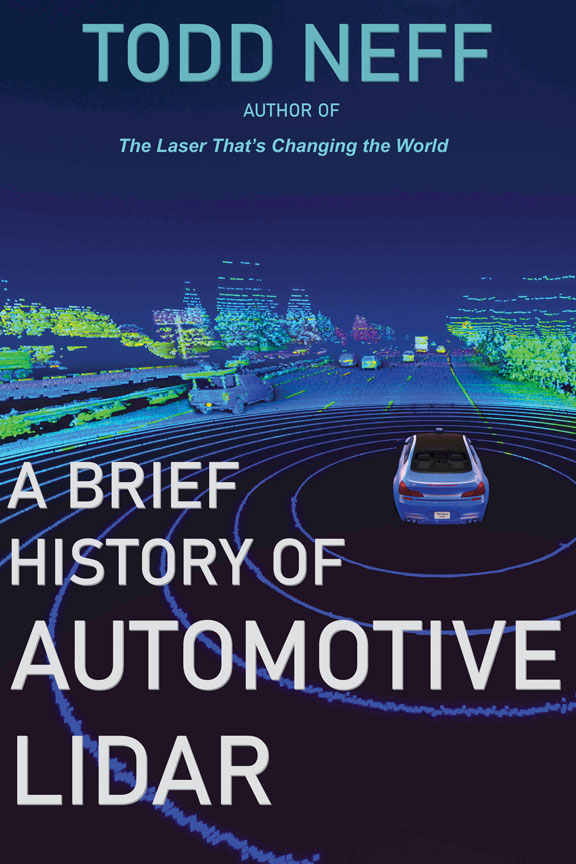In 2016, I got interested in lidar, the laser-based distance-measuring technology. My interest was sparked by the technology’s indispensable role in autonomous-vehicle development. Self-driving cars were coming soon, and lidar was going to be as ubiquitous as windshield wipers.
I dug deeper and realized that cars and trucks were only the beginning of the lidar story. Since shortly after the first laser popped a coherent pulse of ruby-red light in 1960, lidar (or, as the military prefers to call it, laser radar) has brought about huge advances in glaciology, atmospheric science, space science, aerial and street mapping, bathymetry, forestry, archaeology, historic preservation, filmmaking, military reconnaissance, and more.
Many of those advances came before the subwoofer entrepreneur and engineering genius David Hall turned his attention from cameras to lasers for the 2005 DARPA Grand Challenge.
In October 2018, Prometheus Books published The Laser That’s Changing the World, the book that came of my interest in lidar. Because the technology developed over time – and, because with that development, the sophistication and diversity of its applications grew over time – it made sense to organize the story more or less chronologically. So despite automotive lidar’s outsized presence in the book, that part of the greater lidar history ended up toward the end of the book.
More than three years later, I’ve decided to put automotive lidar out front in a short eBook. A Brief History of Automotive Lidar is an update of the three chapters of The Laser That’s Changing the World that tell the origins story of automotive lidar. The two major players are Red Whittaker and his Field Robotics Center at Carnegie Mellon University and David Hall of Velodyne Lidar. These chapters also include my visits to the University of Michigan’s Mcity autonomous-vehicle testing center and to Uber ATG, the ride-sharing giant’s autonomous-vehicle development house (Uber ATG became part of Aurora Innovations in late 2020).
Most of this brief history went unchanged, being history. But lidar’s been a continuing story, so some updates were in order. I wasn’t alone, as of 2017-2018, in believing that robocars and trucks would be plying our streets by 2021. Ford planned on having a fleet of them running driverless ridesharing routes by now. Velodyne was well into building a factory that could supply perhaps a million units a year as of a couple of years ago.
In all of 2020, Velodyne – by its own estimation the top-selling automotive-lidar manufacturer – produced about 11,500 units.
I thought automotive lidar would move the technology to the mainstream. Instead, the Apple’s iPhone 12 (and, one assumes, subsequent models) will play that role.
Yet it feels like automotive lidar’s time is finally coming. Automakers and suppliers – with the notable exception of Tesla – are all but unanimous in their belief that lidar will be an essential sensor in fully self-driving vehicles. The valuations of automotive-lidar companies reflect that: Six lidar makers have either gone public or will soon do so through special-purpose acquisition companies, or SPACs: Aeva ($2.1 billion initial valuation); AEye ($2 billion) Innoviz ($1.4 billion); Luminar ($3.4 billion); Ouster ($1.9 billion); and Velodyne, the industry pioneer ($4 billion). That’s close to $15 billion for six companies whose aggregate production has totaled a few tens of thousands of units.
I’d still like people to read The Laser That’s Changing the World. There were some great stories to tell (the book is as much about the people as the technology). But I figured I’d provide a way for those most interested in vehicle autonomy – as I once was – to cut to the chase.

